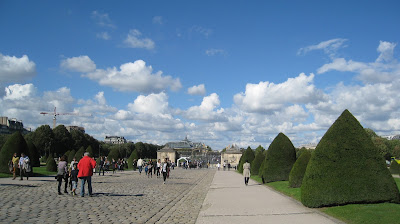I continue to trundle my commuting-way through
Ursula K. Le Guin's Earthsea series: the next book to fall before my omnivorous eyes was
The Farthest Shore.
... wherein we return to our hero, Ged, now the Archmage, widely recognized as important and powerful. He has matured and is generally better-regulated in terms of mood and garrulousness. But the dilemma of the book is that all magical power is being sapped out of the world, as well as all hope, determination, faith, and fellow-feeling. All apparently gone, to be replaced by isolation, fear of death, substance addiction, slavery, etc. --- dark subjects not previously indicated as widespread in Earthsea. Yet here they are, with a focal point somewhere in the west.
Having previously travelled so far east that he went beyond maps and map-monsters to a mythical location in the ocean, where he confronted his own death, Ged and his intrepid sidekick Arren now travel to the western extremity of the world, encountering again the dragons we remember there, and go beyond --- into the very realm of death. Which of course they do not conquer, but they at least come to terms with it, which is all that decent people can be expected to do in this life. Again Le Guin's powerful writing is about people trying to find satisfaction in their own lives, without seeking glory or any other outside acknowledgement.
Having travelled now furthest east, furthest west, to the southernmost islands, and spent his power to close a hole in the world, the worn-out Ged is given a merciful retirement to his home island, delivered as all heroes are on dragonback. The balance of the world is restored, a king is placed on the long-empty throne, and all people have a giant attitude-adjustment so that everything works better and more smoothly in society. Hooray!
This book was as magical as the others, but the sneaky parts about despair and suspicion and distrust were not sneaky
enough --- I thought it was clear, based on the language used, that the suspicion of each character for the others was being imposed by a cloud of evil magic, and I wondered why the main characters just
went with it instead of introspecting about their own suspicion for even a minute. But that's okay, it's a "young adult" book, I cannot expect everything of every book. It was still great, and the author's note at the end of the book featured all the grown-up introspection that I
knew was hiding beneath the surface of the novel, delivered in beautifully clear and poetic prose.
This post's theme word is onomasticon, "a dictionary of names, esp. personal names or place names."
The onomasticon is the most powerful tome in Earthsea, since magic, power, and control are all rooted in knowing proper names of things.























